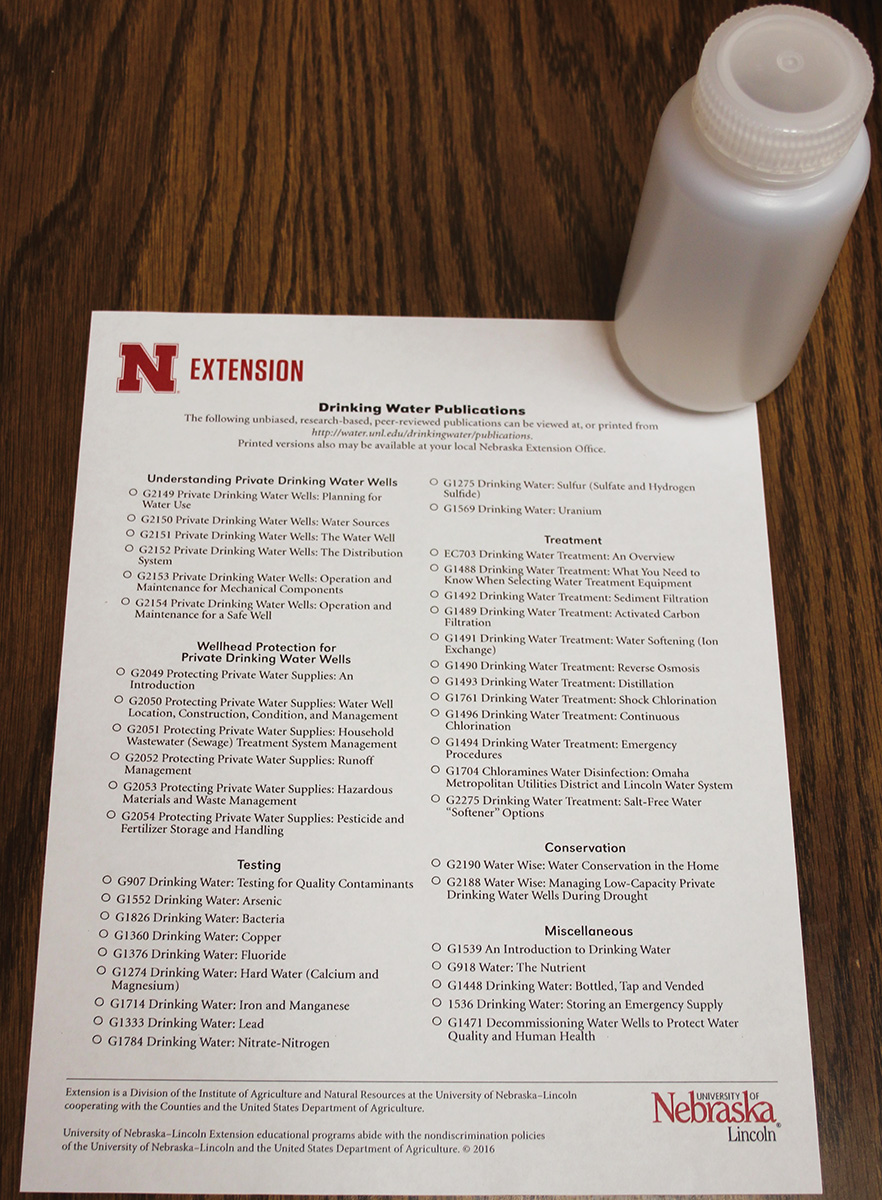
By Becky Schuerman, Extension Domestic Water/Wastewater Associate
There are naturally occurring elements and minerals within Nebraska geology, and with that, it is not uncommon to find them in Nebraska’s groundwater. This month, the final installment of the Spotlight Series is Uranium.
URANIUM
Uranium is a radioactive element found in certain kinds of rocks and soils within Nebraska’s geology and throughout the U.S. When water, the universal solvent, passes through uranium-containing formations, it can cause the uranium it comes in contact with to dissolve. Uranium is colorless, odorless and tasteless. The only way it can be detected in drinking water is through submitting a sample for laboratory testing. The Maximum Contaminant Level (MCL) for uranium mass set forth by the Environmental Protection Agency (EPA) in the Safe Drinking Water Act, is 30 micrograms per liter (μg/L) or parts per billion (ppb).
HEALTH EFFECTS
Exposure to uranium can be a health hazard and potentially cause adverse chronic health effects. This means that health effects will result after continuous consumption of uranium-contaminated water for a long period of time. The chronic health effect associated with long-term ingestion of uranium is that it may put an individual at an increased risk of kidney damage. As with other drinking water contaminants, there are variables as to the potential severity of the health effects. These variables include: how much uranium does the water contain, how much water has been consumed, how long has a person been exposed to the water and the individual’s age and overall health.
TREATMENT
A Point-of-Use (POU) drinking water treatment system such as reverse osmosis, distillation, special adsorbent media (such as titanium dioxide) and anion exchange are documented to remove uranium, as well as a variety of other drinking water contaminants. Commonly installed at the kitchen sink, a tap for a POU system is placed where water is most often drawn for drinking and/or cooking needs. Filtration devices such as pour-through, POU activated-carbon filters or faucet-mounted filtration devices are not documented to effectively remove uranium from drinking water. It is highly recommended to work with a reputable water quality treatment company to determine what the best and most effective treatment option will be for your situation.
According to the 2020 Annual Water Quality Reports for Lincoln and the three other community water systems in Lancaster County, there are no uranium mass test results to report at this time. While low- to moderate-levels of uranium are not uncommon throughout Nebraska, the highest levels of uranium are most commonly found in groundwater from the Republican, North Platte and some areas of the Platte River valleys.
FOR MORE INFORMATION
For further information about uranium and other drinking water topics, see Nebraska Extension’s NebGuides at https://water.unl.edu/article/drinking-water/nebguides.